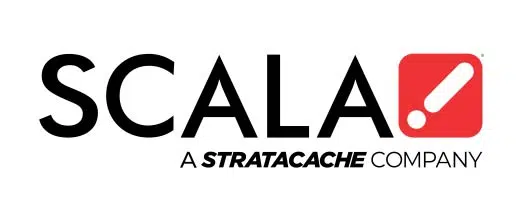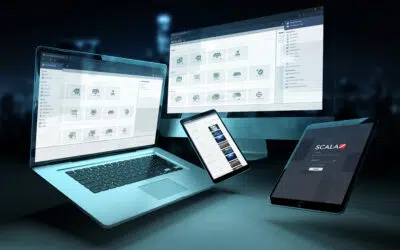What is a Digital Signage Media Player? A Comprehensive Guide
by Scala Team
What is a Digital Signage Media Player? A Comprehensive Guide
by Scala Team
In this blog, we explore the world of digital signage media players and how they are revolutionizing content delivery across various industries. Here’s what you’ll learn from this blog:
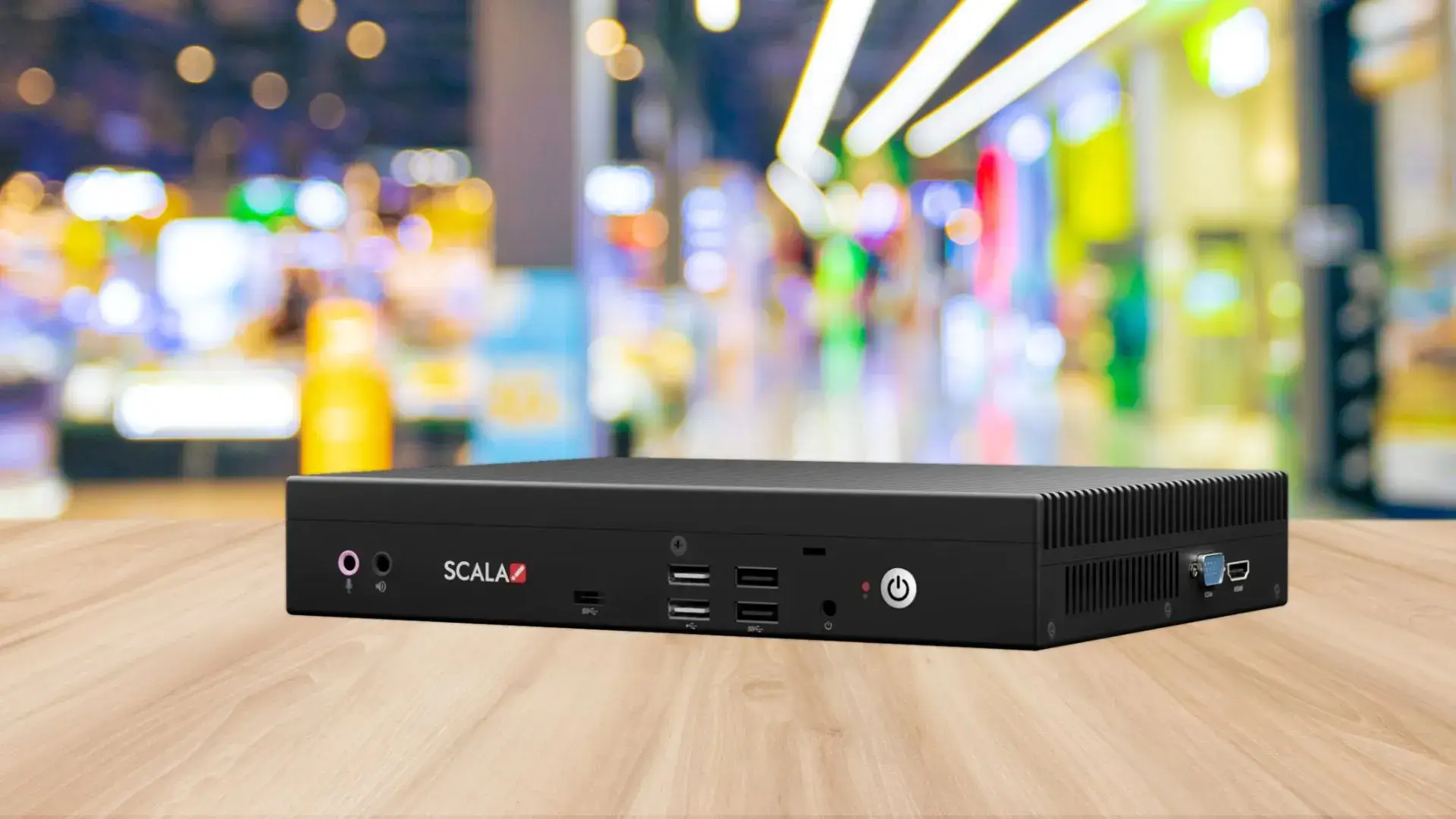
Digital signage has become one of the most disruptive marketing tools used in various businesses such as retail stores, hospitals, banking, transportation hubs and more. Especially in a modernized country like Singapore where it has been proven to be an effective way to communicate and engage with customers, push higher sales for showcased products, and publish important announcements that can all be done in real-time. Unlike a traditional printed poster that used to be the norm, digital signage can also be used to display dynamic visuals to catch and retain customers’ attention.
A digital signage has several components to it, from the physical parts that make up the hardware, to the intangible computer program that runs in the backend i.e. Content Management System (CMS), which makes up the software. The screen is the most visible part where visuals are displayed, but at the heart of any digital signage setup is the Digital Signage Media Player, which is the device responsible for delivering content from the CMS to the screen. This is usually an external drive connected to the screen and mounted behind the screen, but in other cases, can also be internally embedded into the screen,
In this article, we’ll explore what a digital signage media player is, how it operates in a digital signage set up, a media player setup guide, and provide Scala’s options of digital signage media players in Singapore. We’ll also address basic and common challenges when it comes to the technical aspects of digital signage installation and provide practical solutions to ensure a seamless digital signage technology experience.
What is Digital Signage Media Player?
A digital signage media player is commonly a small device that is either installed within a digital display, or an external hardware that connects to the digital display (like an LED screen or an interactive kiosk) that is mainly responsible for controlling and playing visual content on the digital signage, such as images, videos, live feeds, or other forms of rich media. The digital signage media player is akin to the “brain” of the digital signage technology, which acts as the conduit between the content management system (software) and the display screen (hardware). This ensures that the right content is always shown on the screen according to what’s programmed in the CMS.
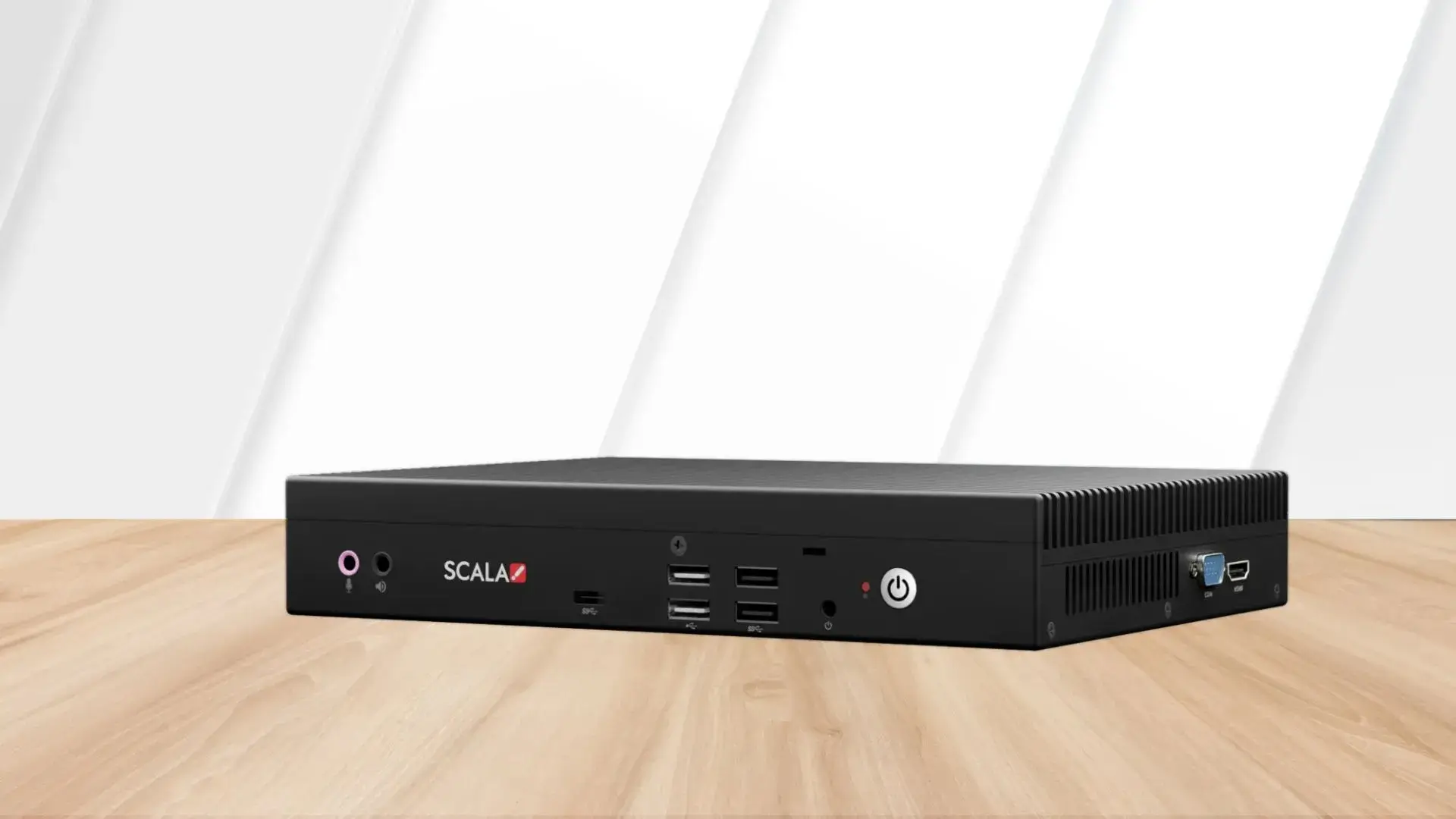
For a digital signage media player to work effectively, it needs to be connected online, either to the Internet or a local network, allowing the device to receive and transmit content that will be display onscreen coming from the CMS software. These media players can be programmed and updated in real-time to display customized content based on schedule and preferences, whether it’s a marketing promotion, sales advertisements, menu boards, welcome messages, or any type of dynamic content like news feeds, videos, and image slides.
In the context of using digital signage media player in the Singapore business-scape, there has been a considerable rise in demand considering that digital signage technology is now the rule rather than the exception when it comes to marketing. A digital signage media player has an essential role to play in pushing eye-catching and accurate content to digital displays found in shopping malls, retail stores, corporate offices, transportation hubs, hospitality and medical establishments, to name industries that have readily embraced this technology.
How Does a Digital Signage Media Player Work?
A digital signage media player works by communicating with both your display screens and the CMS, or content management system, transmitting content to and from one platform to the other. The CMS is the software used to store and manage media files used for content to be displayed on the digital signage. From the CMS, the media player downloads and plays out the content on the screen, according to the schedule and format specified.
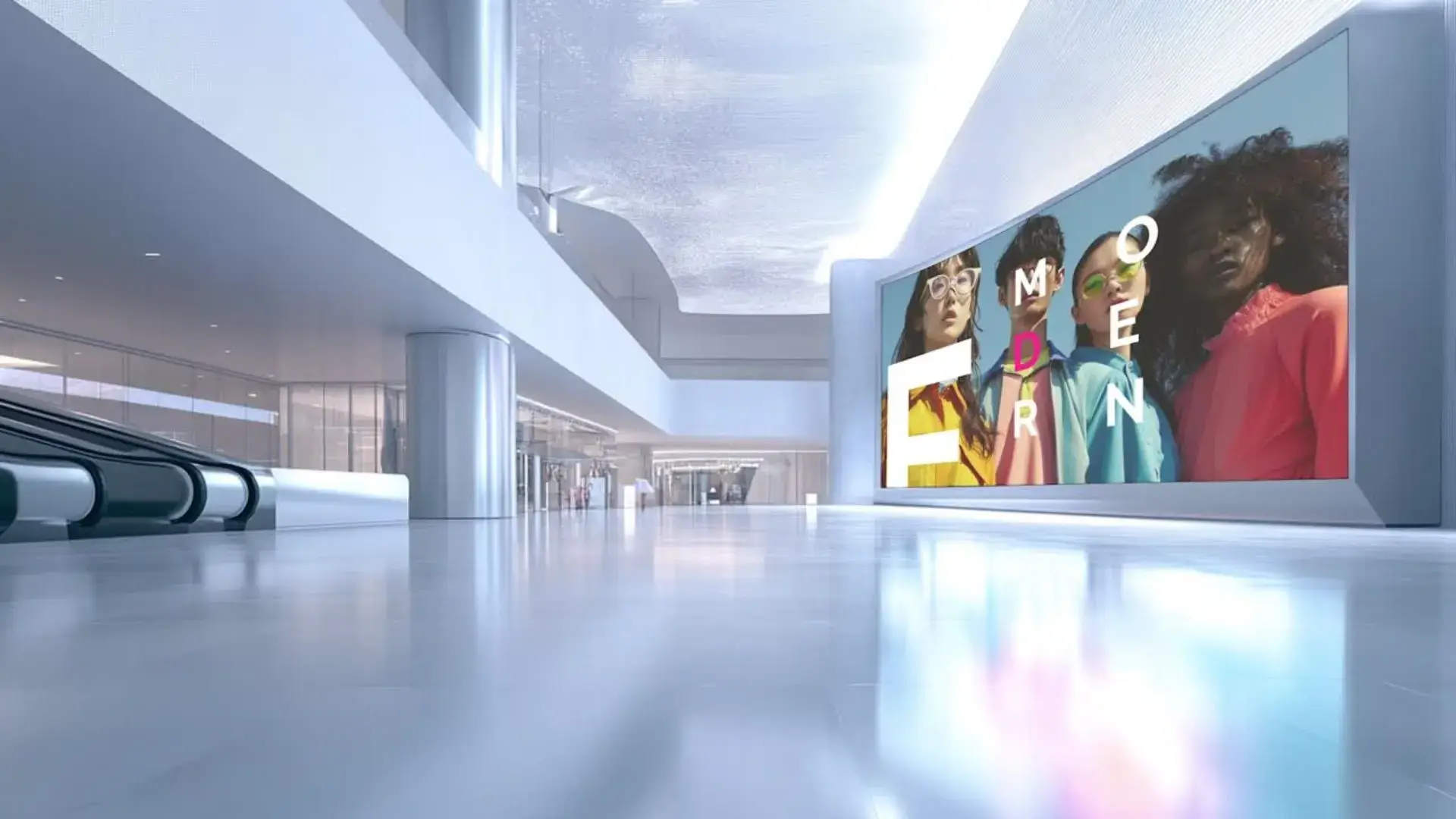
These digital signage media player devices are typically equipped with a range of hardware and software functionalities, including:
- Processing Power: As the main connector between the CMS and digital signage, a media player often includes a processor similar to a desktop computer or smart phone (CPU). More advanced players may use GPUs or graphics processing unit for graphics-heavy content.
- Storage: A good digital signage media player must have a generous amount of internal or external storage to store media files locally. This important feature ensures that content will always be available and accessible, even when the internet connection is down.
- Connectivity: More advanced digital signage media players usually come with various ports to cater to a variety of connectivity options, such as Wi-Fi, Ethernet, Bluetooth, HDMI and USB. This allows for seamless communication between the CMS and the media player.
- Software Compatibility: Most digital signage media players are made to be compatible with various operating systems like Android, Linux, or Windows, and able to support multiple file formats such as MP4, JPEG, HTML5, etc.
Different Types of Operating Systems in Media Players:
Getting the correct operating system (OS) for a digital signage media player is an important decision as this effects ease of integration with other systems, its compatibility, and functionality. Digital signage media players have three most common operating systems that have different features and advantages such as:
Windows – This is beneficial for businesses that need to integrate with other Windows-based systems. For example, point-of-sale (POS) or CRM software. Media players that run on Windows OS are highly versatile and compatible with almost all enterprise-grade software solutions. Aside from this, Windows-based media players can run complex content with better support such as HD video, multitasking, and interactive applications, making it a popular choice for retail and corporate environments.
Android: Android media players are popular and widely used due to its cost-effectiveness and user-friendly interface. Businesses can quickly find compatible apps or solutions on Android OS. Its open-source nature makes it easy for users to have custom software development, enhancing its adaptability for various applications such as kiosks, wayfinders, and interactive digital displays.
Linux: Linux-based media players are recognized being able to handle complex and resource-heavy digital signage content. They are known for their stability, security and high performance. Since Linux has an open-source platform, businesses can get unique customization and more control over their media player setup. Aside from this, Linux is more energy-efficient and are built for 24/7 operations making it an ideal choice for those that require heavily on digital signage such as transportation hubs, healthcare facilities, or banking.
These are the 3 main operating system options for media players, and each has its own strengths and capabilities. It is best for businesses to consider what the specific needs are of their digital signage setup before they select the best OS for their media players.
Different HDMI Outputs in Media Players
Did you know that the number of HDMI outputs play a significant role based on how many displays a single player can support and the quality of visual displays across multiple screens?
When choosing a digital signage media player, it is best to select based on how many HDMI outputs you will need in relation to your business objectives,
- Single HDMI Output: This is an excellent option for industries such as retail, hospitality and corporate environments where only one screen is used at a time to engage customers and display announcements. Single HDMI output media players can deliver high-definition (HD) content for one screen.
- Dual HDMI Outputs: This is helpful in settings where there is different content shared on multiple screens. For example, quick service restaurants (QSR) that use digital menu boards and transportation hubs that show real-time schedules in one screen and announcements in another screen. Having dual HDMI outputs can support two separate screens working simultaneously. It allows greater flexibility in delivering different content to multiple screens and locations in real time.
- Quad HDMI Outputs: For a more complex digital display set-up, quad HDMI is the ideal choice. These media players can handle up to four screens playing at once and in different locations. It’s best for places like shopping malls, sports arena or airports where high-definition visuals are crucial to captivate large audiences. Businesses can leverage on the power of quad HDMI outputs to create immersive visual experiences in video walls.
For businesses to deliver dynamic, visually appealing, and engaging content across multiple screens it is crucial to select the right media player with the appropriate number of HDMI outputs. This will help the business enhance customer experience while optimizing operational efficiency.
Scala’s Digital Signage Media Players
Scala combines decades of digital signage expertise with modern technology to provide digital signage media players in Asia Pacific designed for optimum performance.
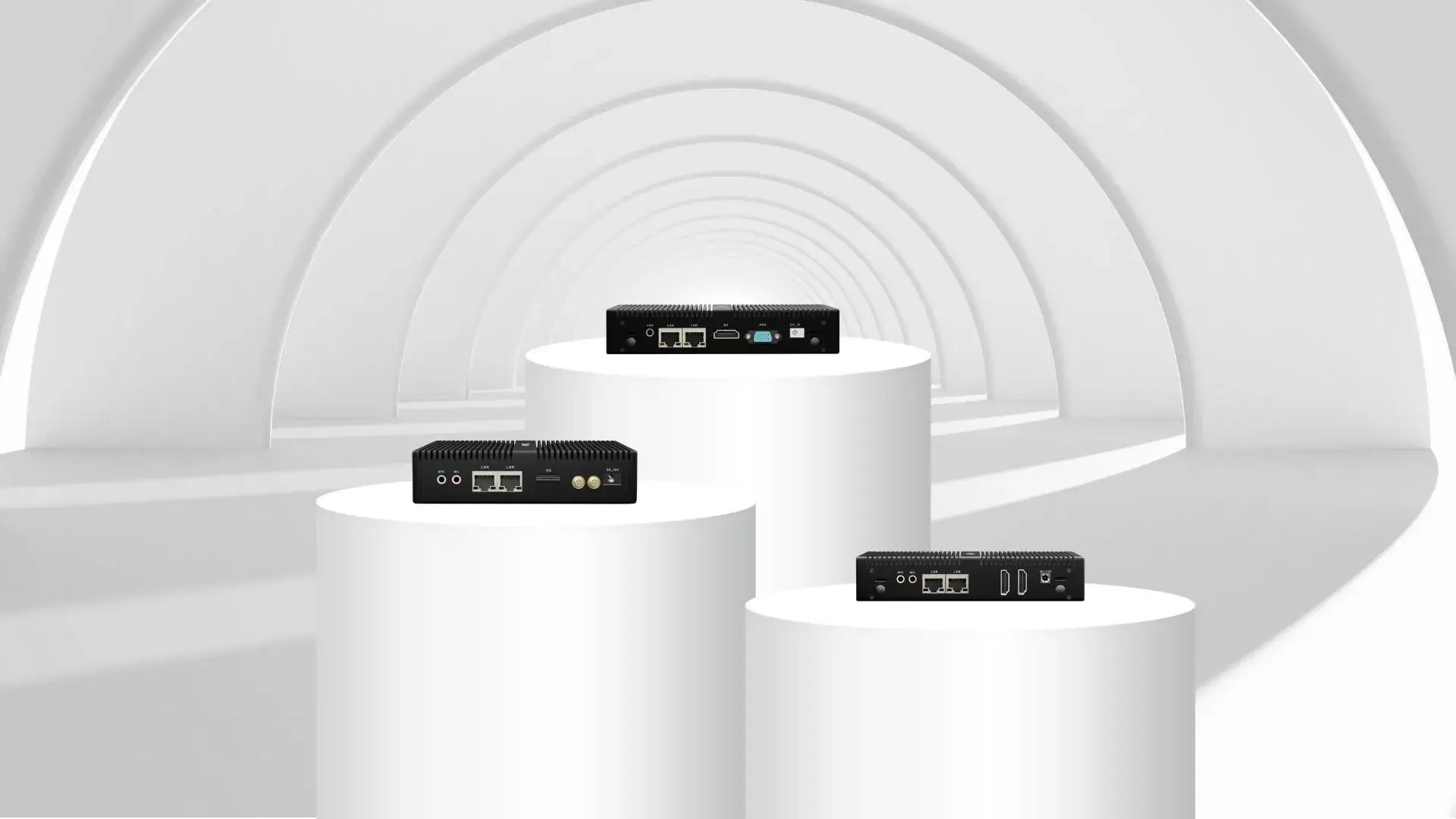
Featuring a slim form factor and subtler look, Scala media players deliver stable multimedia content playback and enable efficient remote monitoring. These devices support engaging digital displays and cater across verticals including retail, fast food, hospitality, education, transportation and banking.
- SMP-L-AP: Scala Media Player-L-AP is an affordable entry-level digital media player that delivers stability and reliability in an ultra-compact design. With an anodized aluminium housing and fanless design the Scala Media Player-L easily fits into any digital signage location while staying protected from dirt, dust and any other particles that could compromise performance.
- SMP-S-AP: A full-featured single UHD output media player ideal for performance in harsh, high-demand environments
- SMP-SP-AP: A mid-level DUAL FHD output media player ideal for simple digital signage applications that require seamless playback.
- SMP-DX-AP: A dual output digital media player that delivers
enterprise performance and seamless playback of UHD 4K content - SMP-Q: A quad output digital media player capable of producing playback of high-definition content at 1080p
Media Player Setup Guide
As complicated as a digital signage media player seems, setting it up is relatively simpler and straightforward. Follow these guidelines to ensure a smooth digital signage installation:
Choose the Right Media Player
- Before purchasing, consider factors like the number of screens, resolution (4K, HD), connectivity options (Wi-Fi, Ethernet), and whether you need interactive capabilities.
Connect the Media Player to the Display
- The media player typically connects to your display via HDMI, DVI, or DisplayPort. Ensure that the media player and screen are compatible with each other and use high-quality cables to always ensure a stable connection.
Powering Up the Media Player
- After connecting the media player to the screen, plug it into a power source. Many media players use a standard AC adapter or USB power.
Connect to the Internet
- For remote updates and real-time content management, connect the media player to the internet using either an Ethernet cable or Wi-Fi. A stable internet connection is critical for efficient operation.
Install Software
- Depending on the media player you’ve purchased, you may need to install specific software or apps that allow the device to communicate with your Content Management System (CMS). Many digital signage platforms offer dedicated apps for their media players.
Configure the Content Management System (CMS)
- Log in to your CMS platform and connect the media player by entering its unique ID and other login details. Once connected, you can start uploading, managing and scheduling the content for display.
Schedule Your Content
- Organize your media files accordingly and assign them to the media player depending on your content calendar. It is important to note to always preview and do a separate test display before going live, especially when dealing with multiply display screens.
Monitor and Manage
- This is where the CMS is crucial as it lets you monitor the status of your media player and make changes to content as and when needed. This is also where data analytics can be applied by using the analytics tools that come with the system, enabling to track data, such as performance and viewer engagement.
Common Challenges in Digital Signage Installation and Solutions
While digital signage installation seems relatively easy, there can still be some common pitfalls that businesses may need to troubleshoot.
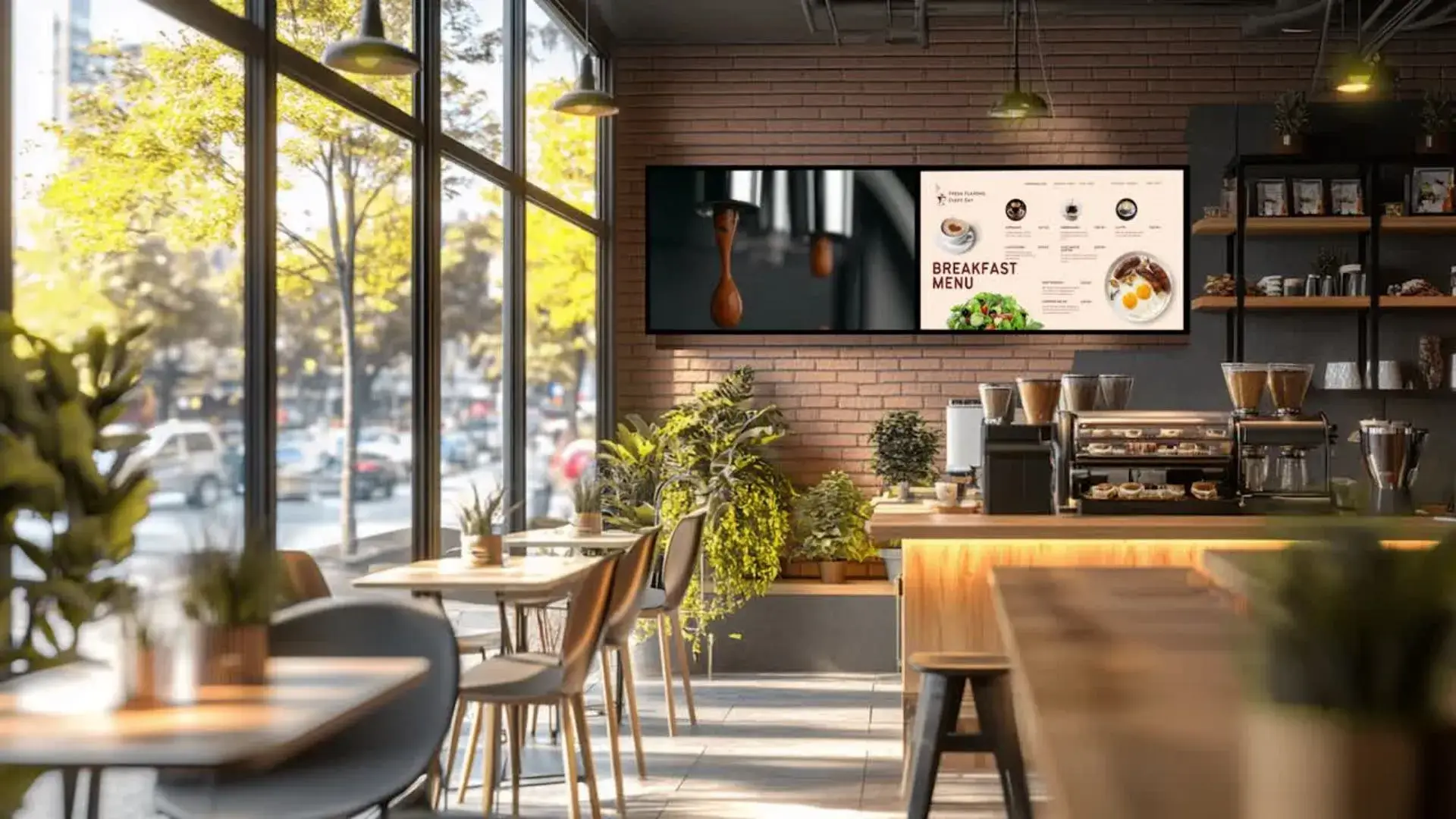
Below are some of these challenges and suggested practical solutions:
- Network Connectivity Issues
- Problem: Unstable internet connections can prevent your media player from receiving updates.
- Solution: Use a wired Ethernet connection for more stable connectivity or invest in a high-quality Wi-Fi router. In case of connectivity issues, opt for media players that store content locally.
- Compatibility Problems
- Problem: Not all media players work seamlessly with every display or CMS.
- Solution: Ensure the media player supports the operating system and file formats required for your display and CMS. Always check compatibility before purchase.
- Overheating
- Problem: Some media players overheat during prolonged usage.
- Solution: Make sure your media player is well-ventilated. Avoid placing it in enclosed areas and consider models with built-in cooling mechanisms.
- Content Display Errors
- Problem: Sometimes, content may not display correctly due to resolution mismatches or file format issues.
- Solution: Check that your media files are in the correct format and resolution. Test the content before scheduling it for display.
- Maintenance and Updates
- Problem: Keeping multiple media players updated and in sync can be difficult.
- Solution: Use a cloud-based CMS that automates software updates and allows you to manage multiple players from a central dashboard.
A digital signage media player may as well be the principal component that drives the successful and effective operation of digital signage technology. Understanding what these crucial devices are and how they functions is essential for businesses looking to invest in digital signage technology. Whether you’re setting up digital signage in Singapore or anywhere else, this media player setup guide ensures that your installation process is as smooth and efficient as possible.
With Scala’s range of modernized digital signage media players, we can find the right device for your desired digital signage set up. Learn more about Scala’s Media Platers at apac.scala.com/sg/products/hardware/ and our range of digital signage wares that can be customized to fit your unique business needs.
Frequently Asked Questions
- What is a digital signage media player?
- How do I choose the right media player for my business?
- What is the difference between a standalone and a networked media player?
- What are the connectivity options for digital signage media players?
- Can I use my existing TV or monitor for digital signage?
- A digital signage media player is a device that stores, processes, and displays digital content (videos, images, etc.) on a screen or network of screens.
- Consider factors like the number of displays, required resolution, connectivity options, compatibility with your CMS, and whether you need touch interactivity.
- Standalone media players work independently and are suited for single-screen installations, while networked players can connect multiple displays and receive remote updates.
- Media players typically offer both Wi-Fi and Ethernet connectivity options, allowing them to connect to the internet or a local network for content updates.
- Yes, you can use any screen that has an HDMI, DisplayPort, or DVI input. You just need to pair it with a compatible digital signage media player.
About the Author:
Scala digital signage experts share their experience and thoughts in our blog to provide practical tips and advice for real-world applications. Our team aims to offer interesting content through a variety of formats including long form articles, video logs, interviews and infographics.
